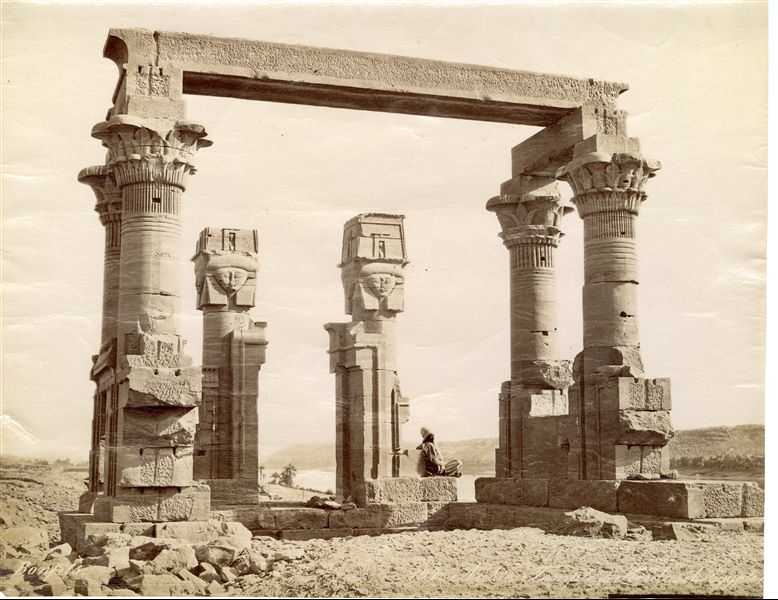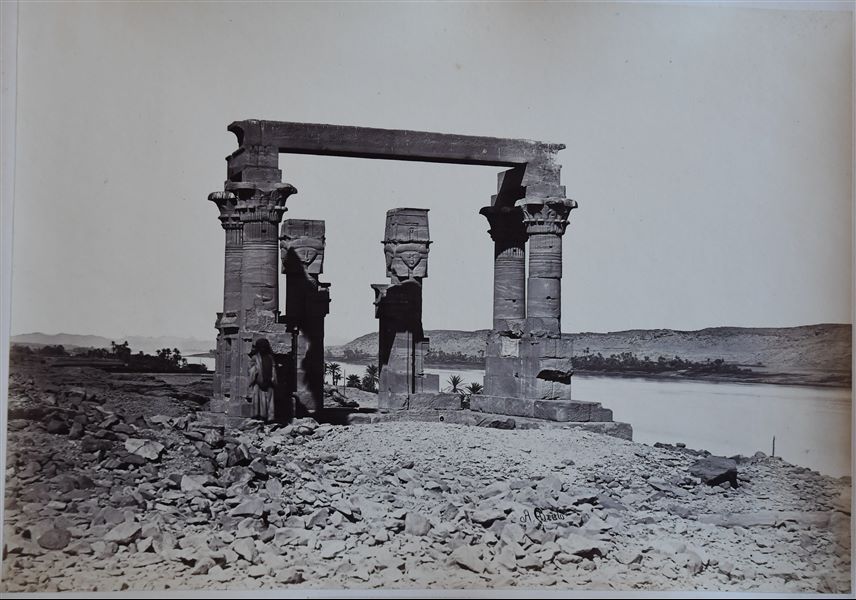View of the remains of the Roman Period (3rd century AD) kiosk in the Temple of Isis at Qertassi, Nubia, in its original position. A local is seated on the base of a column with a Hathor capital. The temple was moved following the construction of the Aswan Dam, and the resulting formation of Lake Nasser, which would have submerged it. The temple was re-erected in 1963 at New Kalabsha, a location on higher ground not far from Aswan. The author's signature is visible at the bottom left.
View of the remains of the Roman Period (3rd century A.D.) kiosk in the Temple of Isis at Qertassi in Nubia, on the banks of the Nile. Only a few columns remain, two with Hathor capitals, four with papyrus capitals. A young Nubian is posing for the camera in front of a column. The author's signature is at the bottom right.
View of the remains of the Roman Period (3rd century AD) kiosk in the Temple of Isis at Qertassi in Nubia. The temple was moved following the construction of the Aswan Dam, and the resulting formation of Lake Nasser, which would have submerged it. The temple was re-erected in 1963 at New Kalabsha, a location on higher ground not far from Aswan. The author's signature is visible at the bottom left.
View of the remains of the Roman Period (3rd century AD) kiosk in the Temple of Isis at Qertassi in Nubia. The temple was moved following the construction of the Aswan Dam, and the resulting formation of Lake Nasser, which would have submerged it. The temple was re-erected in 1963 at New Kalabsha, a location on higher ground not far from Aswan. The author's signature is visible at the bottom left.



